|
If you’re planning a traditional Irish Christmas menu, there’s one item you can’t do without: the Christmas pudding. And there are two ways to acquire one. You can make it from scratch by assembling 26 ingredients six to eight weeks before Christmas, steaming it for several hours, and letting it cure for weeks. Or you can order one on Amazon. Maybe some year, I’ll try the former, with this recipe from the Irish American Mom blog. But last year, and as I’m planning to do this year, I ordered a Mileeven Luxury Irish Christmas Pudding. Based in Co. Kilkenny, Mileeven is a small honey business run by Eilis Gough and her daughter Sarah. The pudding they make is deliciously rich, dense, and sweet, filled with cherries and almonds, Irish stout and whiskey. When I found the recipe for Christmas pudding, I also spotted directions for setting the puddling aflame. So I tried it with my purchased pudding. It worked and it was fun! Here are my photos of the adventure.
2 Comments
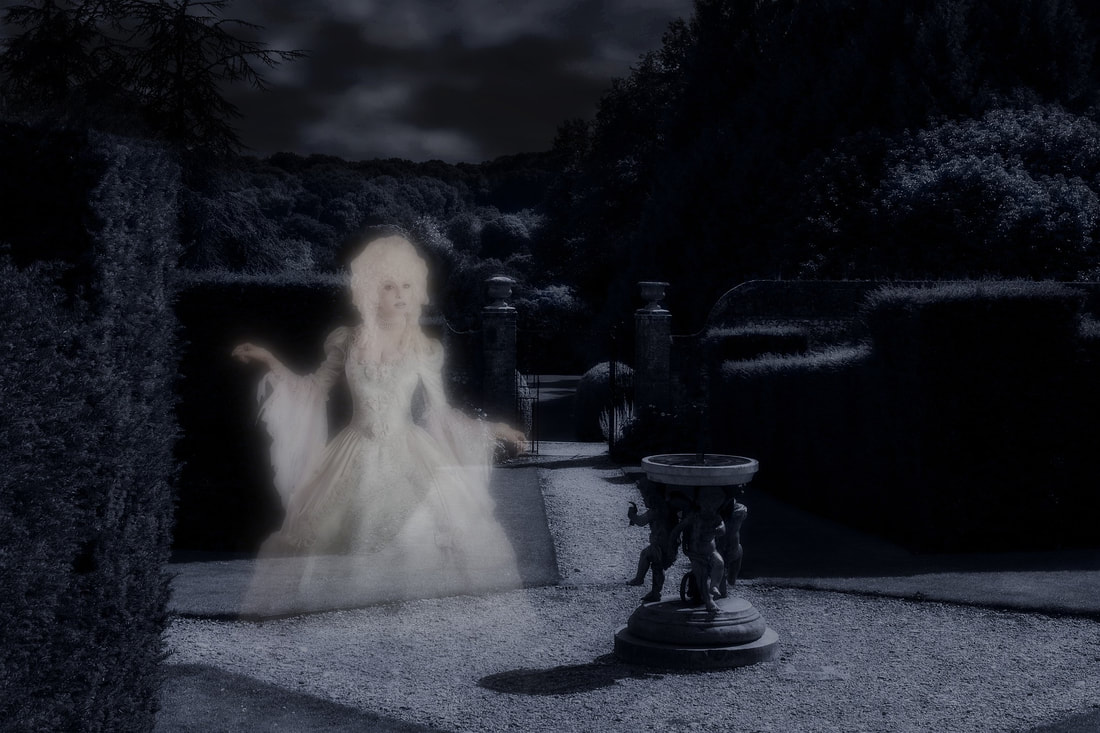 Image by ariadne-a-mazed from Pixabay Samhain (pronounced sow-in, as in rhymes with “cow in”) is an ancient Celtic festival marking the end of the harvest season and the beginning of winter. It takes place on October 31 and is the source of many of our Halloween traditions. Why are ghosts a typical symbol of Halloween? That's because the ancient Celts believed that the division between the realms of the living and the dead was thinnest at Samhain, which would allow the souls of the dead to pass through. Our ancestors built bonfires and offered food to honor their dead loved ones during this festival. They also dressed up in animal skins to chase harmful spirits away. Maybe this is why ghosts found their way into many Irish, Scottish, and English folk songs, which then crossed the Atlantic and inspired American versions. She Moved Through the Fair lyrics by Padraic Collum My young love said to me, "My mother won't mind And my father won't slight you for your lack of kind" And she stepped away from me and this she did say: It will not be long, love, till our wedding day" As she stepped away from me and she moved through the fair And fondly I watched her move here and move there And then she turned homeward with one star awake Like the swan in the evening moves over the lake The people were saying, no two e'er were wed But one had a sorrow that never was said And I smiled as she passed with her goods and her gear, And that was the last that I saw of my dear. Last night she came to me, my dead love came in So softly she came that her feet made no din As she laid her hand on me and this she did say "It will not be long, love, 'til our wedding day" The Unquiet Grave (sometimes called Cold Blows the Wind) Cold blows the wind to my true love and gently drops the rain I only had but one true love and in greenwood she lies slain I'll do as much for my true love as any young man may I'll sit and mourn along her grave for a twelve-month and a day When the twelve months and one day was past the ghost began to speak: "Why sit thou'st here along my grave and will not let me sleep?" "There's one thing that I want sweetheart, there's one thing that I crave And that is a kiss from your lily white lips then I'll go from your grave" "My lips they are as cold as clay my breath smells earthy strong And if you kiss my cold clay lips your days they won't be long Go fetch me water from the desert and blood from out of stone Go fetch me milk from a fair maid's breast that a young man never had known" 'Twas down in Cupid's Garden where you and I would walk The finest flower that ever I saw is withered to a stalk The stalk is withered and dry sweetheart the flower will ne'er return And since I lost my one true love what can I do but mourn? "When shall we meet again sweetheart? When shall we meet again?" "Ere the oaken leaves that fall from the trees are green and spring up again"
From as early as the 1630s immigrants from Ireland were arriving on the shores of North America, joining the mixture of nationalities in a steady stream, and sometimes in waves, up to this very day. They brought with them a strong devotion to their native culture, appreciated their freedom to express it here in the States, and shared it generously until many colorful influences from Irish culture became part of the fabric of American and Canadian culture. So in this month of March, designated to celebrate Irish American Heritage in the US, we’ll take a look at three aspects of American culture and how the Irish left their mark on them. Music Before the American Revolution, most Irish immigrants were Protestants from Ulster, also known as Scots-Irish. They tended to settle in the Appalachian Mountains. American bluegrass, folk, country, and Western music can trace its roots back to the Celtic folk tunes they played. There are many well-known American songs that sound a lot like their Irish counterparts. One good example is the classic Western song “The Streets of Loredo”. Compare it to “The Unfortunate Rake” and see if you can hear the similarities. Language English is a language cobbled together from several languages, and American English is especially peppered with words from other languages due to our long history of immigration. And our Irish ancestors have contributed many. Here are a few examples: “Slew” as in “a whole slew of dancers at the céilí,” comes from the Irish word slúa which means "many." In the 19th and early 20th centuries, Irish Americans began to sort into two classes known then as the “lace curtain” Irish and the “shanty” Irish. The lace curtain group had prospered and joined the middle class, while the shanty Irish lived in poorer conditions. The word "shanty" comes from sean tí, Irish for “old house.” And there were plenty of political rallies where people chanted catchy phrases. These reminded Irish immigrants of sluagh-ghairm, the yell of a crowd or a battle-cry. That’s why we call them “slogans” now. Two more Irish words will likely sound familiar: clann which means "family," and gleann which means "valley." There’s a book called How the Irish Invented Slang by David Cassidy, but I only mention it to let you know that it has stirred up quite a bit of controversy. Most experts in the Irish language consider it complete nonsense and an academic scam. So now you won’t fall for that one. Dance The Virginia Reel, a popular party dance throughout the 1800s, was influenced by English country dance and the Haymaker’s Jig, an Irish céilí dance. American square dancing, too, shows some aspects of Irish céilí and set dances. But the Irish contribution to the most uniquely American dance form is probably the most significant. Tap dance originated when enslaved African people and Irish people saw each other’s dance moves in the 1800s. Somewhere along the line English clogging joined the mix. Then Vaudeville performers took this early fusion and refined the steps over time. Later, dancers took tap even further in movies and Broadway shows and it keeps evolving to this day. Here’s an excellent 5-minute documentary, featuring some cool vintage dance footage, that traces the eclectic mix of cultures that gave us American tap dance. If you would like to receive an article like this each month in your email inbox, along with our calendar of events for the month and other info of interest to fans of Irish culture in the Mohawk Valley, you can sign up for our email newsletter in the form below.
With St. Valentine’s Day coming up, you may be thinking of sending cards or posting a message on your social media accounts to express your love and appreciation for your dear ones. But for these tender feelings, it’s sometimes hard to come up with the right words. That’s when we turn to the poets, and Ireland has produced many excellent ones. Here we offer you three lovely examples of Irish word-weaving with a little about the poets who wrote them. Seamus Heaney
There’s nothing quite like hearing poetry read by the poet who wrote it, especially when he has a charming Irish accent: William Butler Yeats
You can hear the melodious voice of British actor Tom Hiddleston reading this poem here: John Boyle O'Reilly
Some brilliant animator on YouTube made this video bringing O’Reilly’s prison photo to life to recite the poem. You can have articles like this one delivered to your inbox each month along with our calendar of events. All you need to do is sign up in the form at the bottom of this page.
In traditional Irish music, a “set” is a group of three tunes each played three times. So this year I thought it would be fun to put together a “set” of ideas that you can add to your holiday celebrations to make them a wee bit more Irish.
Irish Christmas Recipes Delicious aromas from the kitchen are part of everyone’s festivities, so let’s start with a “tune” of three Irish Christmas recipes. (Click the titles on each recipe below to go to the complete directions.) Irish Plum Pudding Here’s a recipe developed by Mairéad, author of The Irish American Mom blog. Beginning with her mom’s recipe that she fondly remembers making when she was a child in Ireland, she gives detailed directions with her own adaptations that make it easier for us to make here in the USA. Important note: if you want to make Irish Plum Pudding this year, start now. It has to ripen for at least four weeks before you eat it. Crisp Gingerbread Biscuits Famed Irish foodie Donal Skehan says this recipe is a “must have at Christmas”. You’ll have to do some measurement conversions on this one, which takes a little effort on Google, but it looks like it will be worth it. Irish Eggnog Most of the recipes I searched through online looked pretty complicated (like the plum pudding above). Christmas must be a time of serious culinary endeavor in Ireland. But I was able to find this easy one for those who’d rather not spend so much time in the kitchen. Irish Christmas Gifts For our second "tune," let’s take care of some gift shopping. What can you wrap up for your Hibernophile friend who has everything? Here are three ideas. A Subscription to The Online Academy of Irish Music Some famous names in Irish music are among the teachers of these very well-done video courses. They offer monthly, six-month, and annual subscriptions. And if your loved one doesn’t play an instrument, OAIM offers courses in how to sing in the Irish traditional style. Kilkenny Design Centre If your gift list includes someone who’s been to Ireland and already has all the usual items like an Aran sweater, a Belleek vase, and lots of Celtic knot jewelry, you might like to check out the Kilkenny Design Centre’s online shop where you’ll find many beautiful items made by Irish artisans. Shop Local If you’d like to keep your Christmas shopping dollars in Upstate New York, you’ll find Irish-themed gifts at The Plaide Palette in Cherry Valley, Cashel House in Syracuse, and Celtic Treasures in Saratoga Springs. In the Utica area, The Olde Wicker Mill in the New Hartford Shopping Center has an Irish gift department. Irish Christmas Music And finally, our third "tune" actually involves music. Here are three selections to add to your holiday playlists. All of these are available on CD, digital or vinyl, new or used on Amazon.com. You may also be able to find the albums, or tunes from them, on your favorite music app like Spotify or iTunes. An Nollaig by Eileen Ivers Canadian fiddler Eileen Ivers is one of our all-time favorite performers, having appeared at the Great American Irish Festival a number of times. This is her take on some familiar holiday classics and traditional Irish carols. The Clancy Brothers Christmas by The Clancy Brothers This old classic includes many songs you’ll recognize, like Jingle Bells, and some that may be new to you, like Christmas in Carrick. But they’re all rich with the Clancy Brothers’ characteristic sound. The Wexford Carols by Caitríona O'Leary Caitríona, a fine singer herself, did considerable research into Irish carols and poetry from the 17th-18th centuries, then teamed up with stellar musicians Tom Jones, Rosanne Cash and Rhiannon Giddens in 2014 to produce this authentic collection of Irish Christmas music. I hope you found something in this set of three threes that you can blend into your holiday celebration this year. If this article has made you think of some of your own special finds, please share them in the comments. St. Patrick’s Day is coming up soon. So, what are you planning to eat? If you’re like most Americans corned beef and cabbage is the obvious answer. But if you’ve visited Ireland, you know there are lots of other delicious options when it comes to Irish cuisine. Take Bangers & Mash for instance. It’s a favorite at pubs in Ireland and goes down very well with a nice pint of cider In fact when I returned from Ireland in 2014, I came up with this version of Bangers & Mash using some of Central New York’s native cider from Beak & Skiff’s in LaFayette. Before we get cooking, let’s just clear up what that odd recipe name signifies for those who aren’t familiar with it. The "bangers" are sausages and the "mash" is mashed potatoes. All slathered in a delicious onion gravy, this pub grub favorite is very likely to make you feel all warm and cozy. Be aware, this is not a quick recipe and it generates quite a few dishes to wash, but the result is well worth it. CNY Bangers and MashIngredients
Instructions
We’ve recently started a Pinterest board where we’re collecting all kinds of Irish recipes. You may want to check it out for more Irish dishes to try for St. Patrick's Day and throughout the year. |
AuthorThe Craobh Dugan-O'Looney blog is written by Sue Smith Romero. Questions? Corrections? Send them on to her at [email protected] Categories
All
|
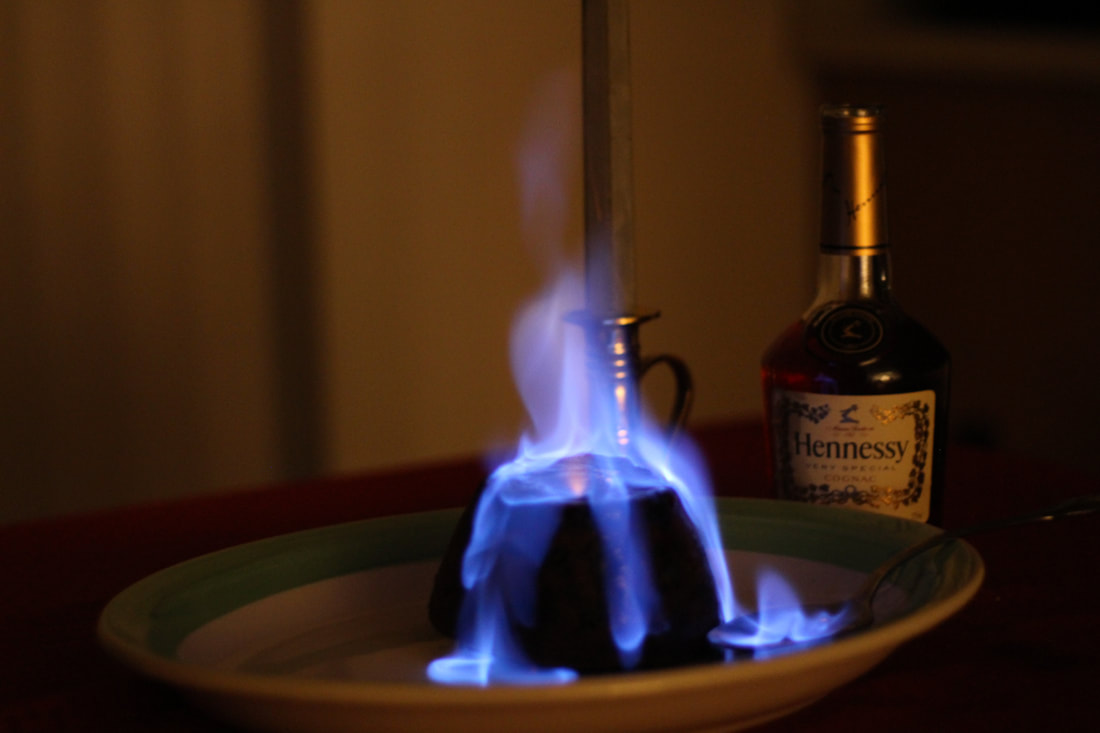
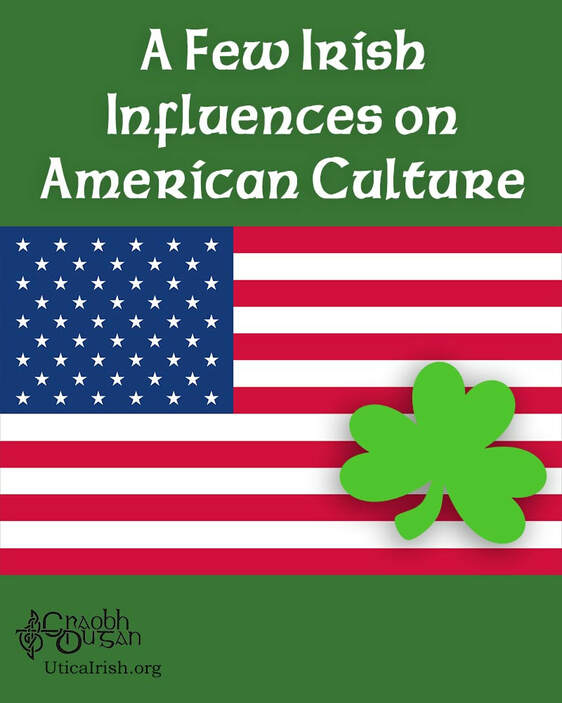
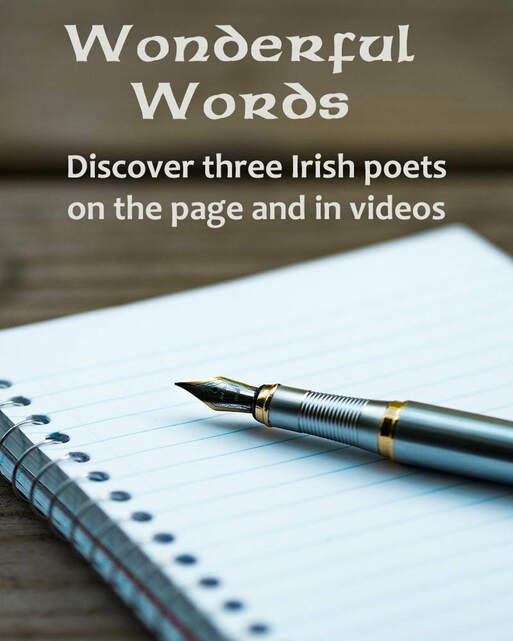
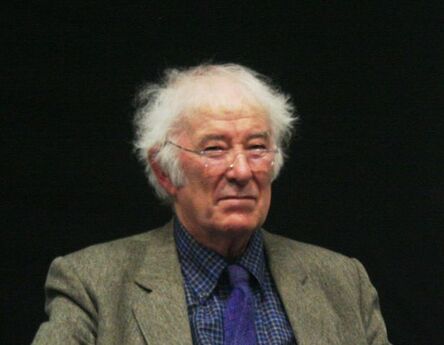
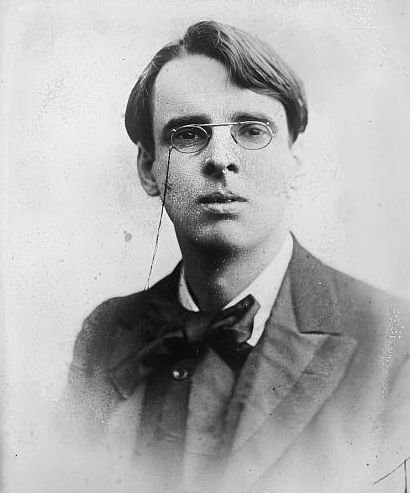
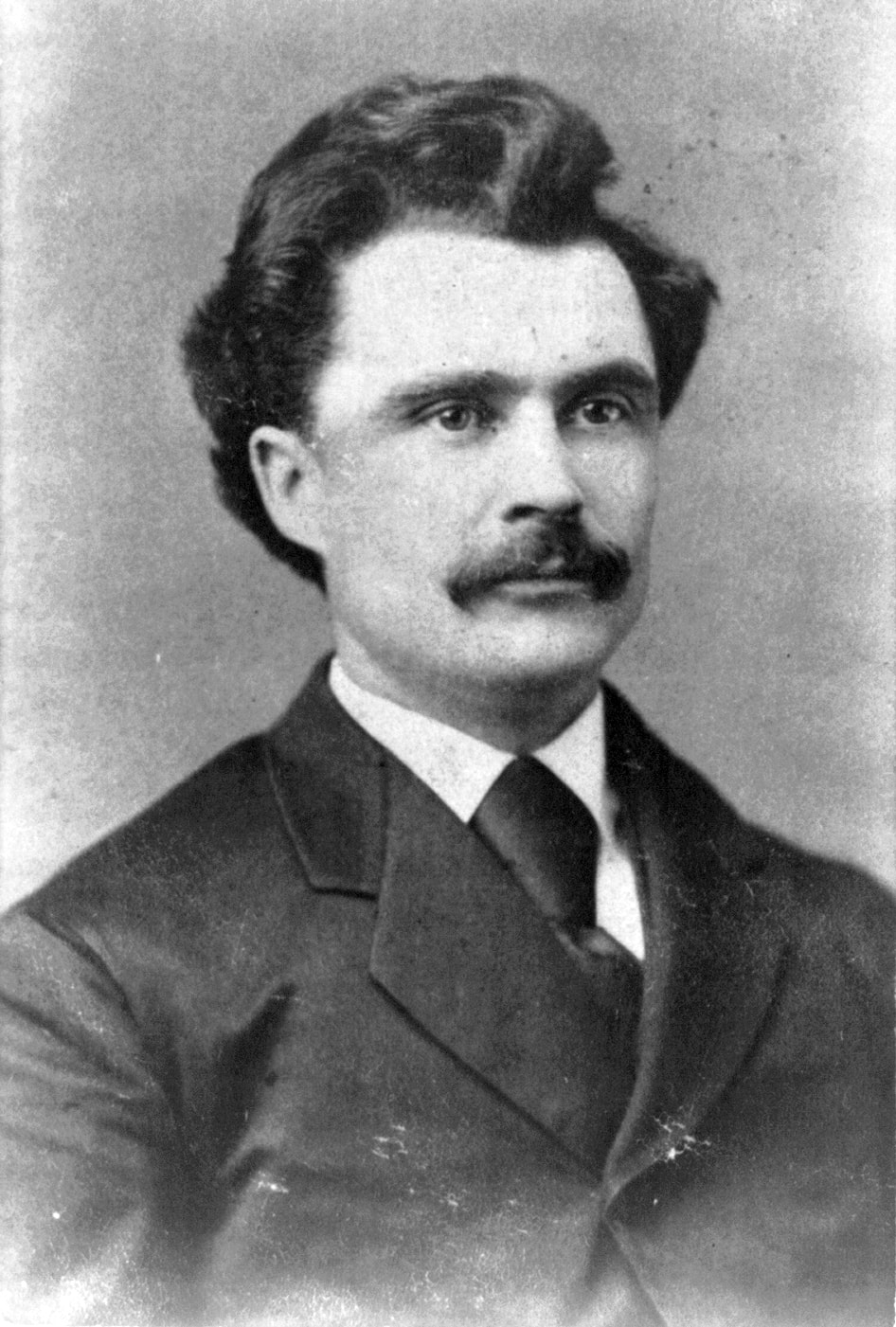

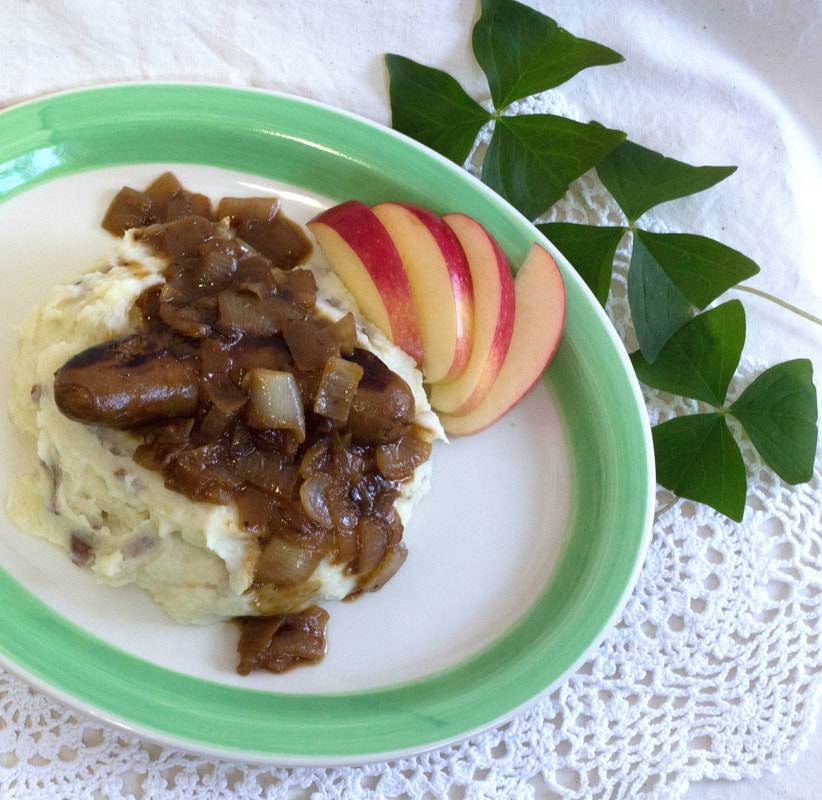
 RSS Feed
RSS Feed